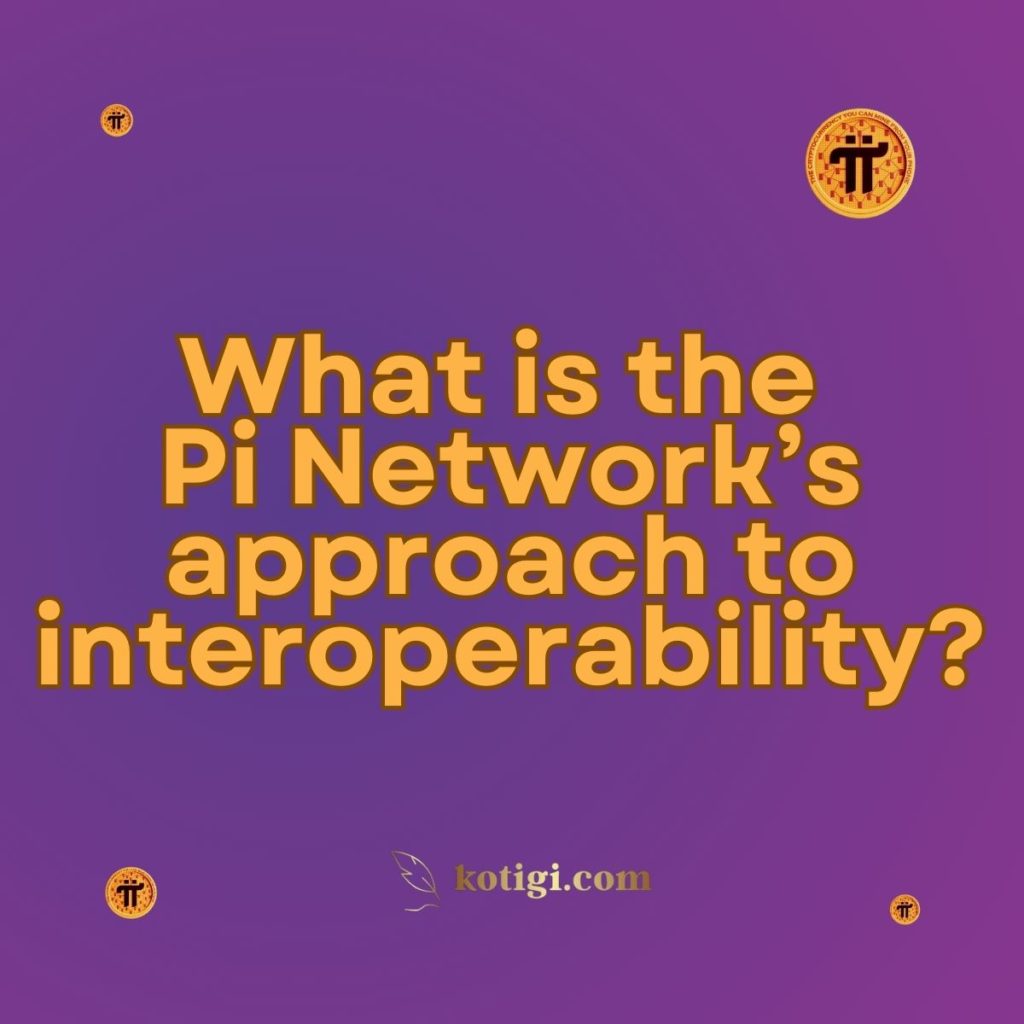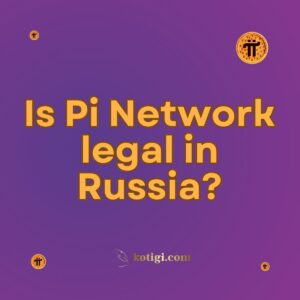
What is the Pi Network’s approach to interoperability?
Pi Network’s approach to interoperability emphasizes creating a flexible and connected ecosystem that can integrate with other blockchain networks and traditional financial systems. By focusing on cross-chain compatibility and seamless data exchange, Pi aims to expand its use cases and appeal to a broader audience. Interoperability will allow Pi users to interact with various decentralized applications (dApps), services, and external networks, enhancing the platform’s functionality and driving its mass adoption in the blockchain space.
Introduction
As blockchain technology continues to evolve, one of the critical challenges for projects is ensuring interoperability— the ability to work seamlessly with other blockchains and traditional financial systems. Interoperability is key for creating an interconnected ecosystem where users can transfer assets, data, and services between different platforms without friction.
Pi Network, a mobile-based cryptocurrency project with millions of users, understands the importance of interoperability for future success. As Pi moves closer to its open mainnet phase, ensuring cross-chain compatibility and integration with external systems is becoming a major focus for the project. In this article, we explore Pi Network’s approach to interoperability and how it plans to connect with other networks and services to enhance its ecosystem.
The Importance of Interoperability in Blockchain
Expanding Use Cases
Interoperability plays a critical role in expanding the use cases of any blockchain network. A single blockchain, isolated from other networks, has limited utility, but when connected to other systems, its value and potential applications increase exponentially. For Pi Network, interoperability means enabling its users to interact with various decentralized applications (dApps), financial platforms, and services outside of its own ecosystem.
By fostering interoperability, Pi Network can leverage the strengths of other blockchains and integrate various functionalities into its ecosystem, ranging from decentralized finance (DeFi) to gaming, supply chain management, and more. This will create a more versatile and valuable platform for its users.
Encouraging Mass Adoption
Interoperability is a vital factor for mass adoption of cryptocurrencies. Users and businesses are more likely to adopt a platform that can easily integrate with existing infrastructure and services. For Pi Network, achieving interoperability with other blockchain networks and traditional systems will make it more attractive to a wider range of users and industries.
By enabling Pi coins to be used across various platforms, including Ethereum or Binance Smart Chain, and allowing easy exchange of assets and information, Pi Network can become a key player in the broader blockchain ecosystem. This approach could help drive mass adoption by providing more real-world utility for Pi coins.
Pi Network’s Interoperability Strategy
Cross-Chain Compatibility
One of the most important aspects of Pi Network’s interoperability strategy is cross-chain compatibility. Cross-chain interoperability allows different blockchain networks to communicate and transfer assets or data between each other. Pi Network aims to enable its users to seamlessly transfer Pi coins and other assets across multiple blockchains.
This will likely involve creating bridges between Pi Network and other leading blockchain networks, such as Ethereum, Binance Smart Chain, or Solana. These bridges will facilitate the transfer of tokens and assets between Pi and other ecosystems, enabling users to access decentralized applications (dApps) and participate in activities across different blockchains.
Integration with External Wallets
Another element of Pi Network’s interoperability approach is integration with external cryptocurrency wallets. Currently, Pi Network uses its own wallet system within the app, but as the project transitions to its open mainnet, the ability to send and receive Pi through third-party wallets will be essential.
This will allow users to manage their Pi coins using popular wallets like MetaMask or Trust Wallet, giving them more flexibility and control over their digital assets. Integration with external wallets also supports Pi Network’s goal of providing a user-friendly experience for both novice and experienced cryptocurrency users.
Connecting to Decentralized Finance (DeFi)
DeFi Opportunities for Pi Users
Decentralized finance (DeFi) has become one of the most exciting innovations in the blockchain space, offering financial services like lending, borrowing, and trading without intermediaries. By ensuring interoperability with DeFi platforms, Pi Network could unlock new opportunities for its users to participate in the DeFi ecosystem.
Once Pi coins are compatible with other blockchain networks, users could leverage their Pi holdings in DeFi protocols for staking, liquidity provision, or decentralized lending. This could increase the utility of Pi coins and offer additional ways for users to generate income from their holdings.
Smart Contract Integration
Smart contracts are the backbone of decentralized applications, enabling programmable transactions without the need for intermediaries. To fully integrate with the DeFi ecosystem and other blockchain applications, Pi Network will need to support smart contracts. This functionality will enable developers to build decentralized applications directly on Pi Network or through other blockchain platforms that Pi interoperates with.
Smart contract integration will also allow Pi Network to support more advanced use cases, such as automated financial services, supply chain management, and other decentralized solutions. By supporting smart contracts, Pi Network ensures that it remains competitive in the rapidly growing decentralized economy.
Challenges to Achieving Interoperability
Technical Barriers
Interoperability is not without its challenges. One of the main technical barriers to achieving cross-chain compatibility is ensuring that transactions between different blockchains are secure and efficient. Blockchains often use different consensus mechanisms and architectures, making it difficult to establish seamless communication between networks.
For Pi Network, the challenge will be to build secure bridges that allow the transfer of assets without introducing security vulnerabilities. This will require careful engineering and collaboration with other blockchain projects to ensure compatibility and safety.
Regulatory and Compliance Issues
In addition to technical barriers, regulatory compliance is another challenge Pi Network must consider in its approach to interoperability. Cross-chain transfers and integrations with traditional financial systems are subject to various regulatory frameworks across different jurisdictions. Ensuring that Pi Network complies with these regulations while maintaining interoperability will be crucial for the project’s long-term success.
Pi Network must navigate anti-money laundering (AML) and know-your-customer (KYC) requirements when connecting to external systems. Balancing these regulatory demands with the need for seamless interoperability will require careful planning and execution.
Future Developments in Pi Network’s Interoperability
Interoperability with Traditional Financial Systems
While Pi Network is currently focused on blockchain interoperability, future developments may include integration with traditional financial systems. This could involve enabling users to seamlessly transfer Pi coins into fiat currency or link Pi Network with banking systems and payment processors.
By connecting Pi Network with traditional financial systems, the platform could offer users more flexibility in how they use and manage their Pi coins, potentially driving wider adoption and making Pi a more versatile asset.
Bridging Pi Network to Web3 Ecosystem
Another future development for Pi Network could be greater integration into the broader Web3 ecosystem. Web3 represents the decentralized internet, where users have more control over their data and online interactions. Pi Network’s focus on accessibility and user empowerment aligns well with the principles of Web3, and the platform could become a key player in this emerging space.
By achieving interoperability with Web3 applications, Pi Network could allow its users to participate in decentralized social networks, marketplaces, and other applications that align with the vision of a decentralized internet.
Conclusion
Interoperability is a critical factor in the success of any blockchain project, and Pi Network recognizes this as it moves towards its open mainnet. By focusing on cross-chain compatibility, integration with decentralized finance platforms, and future connections to traditional financial systems, Pi Network aims to build an interconnected and versatile ecosystem. While there are significant technical and regulatory challenges to overcome, the potential benefits of interoperability—such as expanded use cases, mass adoption, and participation in the DeFi ecosystem—are immense.
Pi Network’s approach to interoperability will be key to its long-term success and its ability to stand out in an increasingly competitive blockchain landscape.
Key Takeaways
- Interoperability Benefits: Pi Network’s focus on interoperability aims to expand its use cases by enabling connections with other blockchains and financial systems.
- Cross-Chain Compatibility: Pi Network plans to build cross-chain bridges, allowing users to transfer Pi coins and assets across different blockchain ecosystems.
- DeFi Integration: Interoperability with decentralized finance (DeFi) platforms will offer Pi users new opportunities to engage in decentralized lending, staking, and liquidity provision.
- Challenges Ahead: Pi Network must overcome technical and regulatory challenges to achieve secure and compliant cross-chain interoperability.
- Future Developments: Potential future developments include integration with traditional financial systems and deeper involvement in the Web3 decentralized internet ecosystem.





